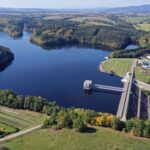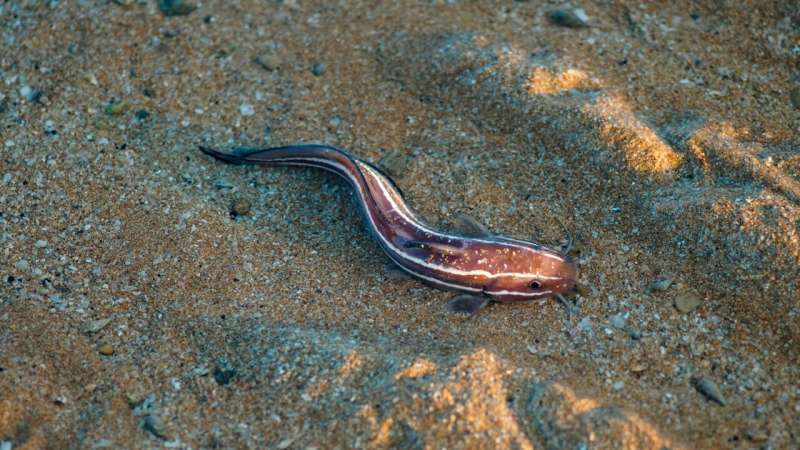Researchers at Michigan State University have uncovered new insights into the travel patterns of sea lampreys, an invasive species in the Great Lakes region. The study, led by doctoral student Kandace Griffin and Professor Michael Wagner, reveals that these parasitic fish tend to navigate the deepest parts of river systems, a discovery that could reshape management strategies for the region’s $7 billion fishing industry.
Published in the Journal of Experimental Biology, the study provides critical information that could aid in the conservation of native fish species and protect the 75,000 jobs supported by the Great Lakes fisheries. “We wanted to know how sea lampreys are making their movement decisions when migrating,” Griffin explained. “Are they guided by certain environmental cues? Are they moving through areas that are safer?”
Understanding Sea Lamprey Behavior
The research team employed acoustic telemetry to track the movements of 56 sea lampreys in the White River near Whitehall, Michigan. This method, akin to GPS, uses sound-emitting tags to monitor the fish’s location. Of the lampreys studied, 46% consistently chose the deepest parts of the river.
Wagner highlighted the significance of these findings:
“For nearly 20 years we have been discovering how sea lampreys migrate along coasts and through rivers. Now, thanks to Kandace’s work, we know where their movement paths come together near a riverbank—the perfect place to install a trap or other fishing device.”
Challenges and Opportunities in Management
The current primary methods for controlling sea lamprey populations include the use of dams and lampricide, a species-specific pesticide. However, both methods have drawbacks. Dams disrupt river ecosystems, while some communities express concern over the use of lampricide.
“Figuring out the right way to fish sea lamprey would decrease its population, lower reproduction rates, and provide managers with the opportunity to match their control tactics to the community’s needs,” Wagner said. The study’s findings could lead to the development of new fishing devices designed to target bottom-swimming, solitary lampreys.
Integrating Traditional Knowledge
Wagner notes that traditional fishing techniques from Indigenous communities could inform the creation of new trapping mechanisms. “We have recently proposed scouring Earth in search of knowledge, both scientific and traditional, about how to capture migrating lampreys and similar fishes,” he said.
Griffin believes that understanding lamprey migration patterns can complement existing control methods. “Hopefully, we can use this as a supplemental control method to the use of the barriers or dams,” she said. “We have societal pressure to remove barriers to enhance river connectivity, and some barriers are failing.”
Future Directions and Implications
The research represents a significant step forward in developing sustainable and community-friendly management strategies for sea lampreys in the Great Lakes. “When a community, or the Great Lakes Fishery Commission, or the governments of Canada and the U.S. come in and say, ‘We’d really rather be able to control this river with something other than lampricide,’ we want to be able to provide 360-degree solutions,” Wagner emphasized.
The study’s findings not only offer a potential new method for controlling sea lamprey populations but also highlight the importance of integrating scientific research with traditional ecological knowledge. As the Great Lakes region continues to grapple with the challenges posed by invasive species, this research could play a pivotal role in shaping future conservation efforts.
 Major US Airports Halt Flights, Sparking Nationwide Travel Disruption
Major US Airports Halt Flights, Sparking Nationwide Travel Disruption European Lakes’ Groundwater Connections Key to Climate Resilience, Study Reveals
European Lakes’ Groundwater Connections Key to Climate Resilience, Study Reveals OpenAI Secures Top Engineers from Tesla, X, and xAI
OpenAI Secures Top Engineers from Tesla, X, and xAI OpenAI Strengthens Team by Hiring Engineers from Tesla and xAI
OpenAI Strengthens Team by Hiring Engineers from Tesla and xAI OpenAI Hires Key Engineers from Tesla, xAI, and X in Strategic Move
OpenAI Hires Key Engineers from Tesla, xAI, and X in Strategic Move